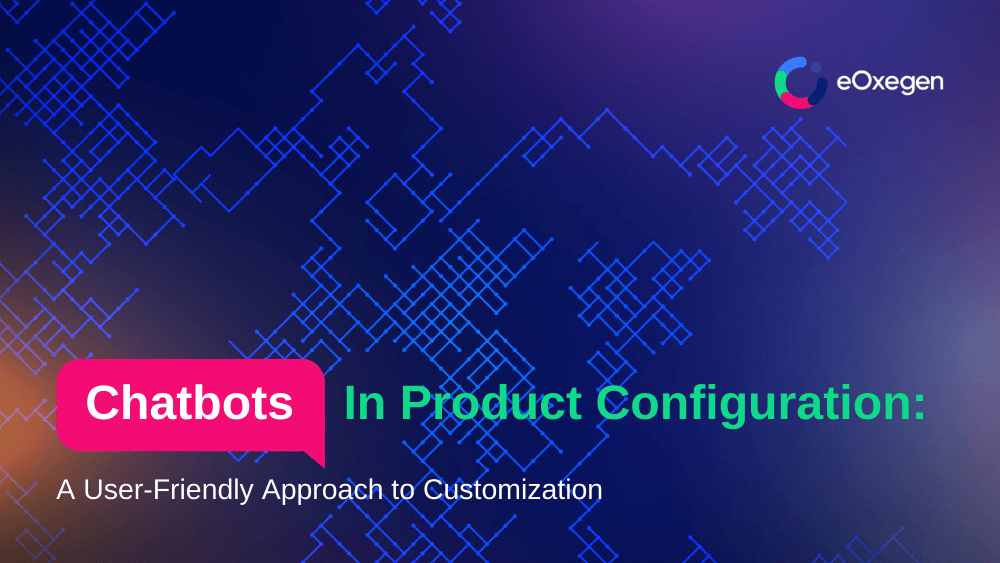Chatbots In Product Configuration: A User-Friendly Approach to Customization
13 Feb, 2024

The insurance industry has always been a little enigmatic. Many found the concept of insurance alien because of convoluted processes, opaque data, and outdated systems.
But due to the rapid advancement of technology, the way insurance firms conduct business has fundamentally changed in recent years. Because there is an abundance of information available online, customers these days are aware of all of their options. In addition, customers in the digital era demand prompt, simple, and customized service. Something that complex workflows and outdated legacy systems can't keep up with.
Although chatbots for insurance are nothing new, more and more insuretech businesses are investing heavily in AI and chatbots.
For instance, research indicates that theinsurance industry spends $124 million on average on artificial intelligence and chatbots. It's interesting to notice that this sum exceeds the industry average by $54 million.
It's clear that conversational AI and chatbots play a big role in the insurance industry.
Overview of Insurance Product Configuration
Insurance product configuration involves the process of customizing insurance policies to align with the specific requirements and preferences of customers. This customization can include adjusting coverage limits, adding optional riders or endorsements, and modifying policy terms and conditions. Traditionally, insurance product configuration has been a complex and time-consuming process, often requiring manual intervention and extensive paperwork. However, with the advent of digital technologies, insurers are now able to streamline and automate the product configuration process, making it more efficient and user-friendly.
The Role of Chatbots in Product Configuration
Chatbots, also known as conversational agents or virtual assistants, are computer programs designed to simulate human conversation and assist users with various tasks. In the context of insurance product configuration, chatbots play a key role in guiding customers through the customization process in a user-friendly and intuitive manner. By leveraging natural language processing (NLP) and artificial intelligence (AI) technologies, chatbots can understand and respond to customer inquiries, provide personalized recommendations, and facilitate the selection of product options.
Benefits of Chatbots in Insurance Product Configuration
Enhanced User Experience
Chatbots offer a more interactive and engaging user experience compared to traditional forms or web interfaces. By engaging customers in conversation, chatbots can gather relevant information about their needs and preferences and provide tailored product recommendations accordingly.
Efficient and Streamlined Process
Chatbots streamline the product configuration process by guiding customers through the various options and choices in a step-by-step manner. This helps reduce the time and effort required to configure insurance products, leading to faster turnaround times and improved customer satisfaction.
Personalized Recommendations
Through advanced data analytics and machine learning algorithms, chatbots can analyze customer data and behavior patterns to provide personalized product recommendations. This ensures that customers receive insurance products that are tailored to their unique needs and circumstances.
24/7 Accessibility
Chatbots are available round-the-clock, allowing customers to access insurance product configuration tools at their convenience. Whether it's during office hours or after-hours, customers can interact with chatbots to configure insurance products and get answers to their questions anytime, anywhere.
Use Cases of Chatbots in the Insurance Industry
Settling and Processing Claims
Claims management and settlement is complex and time-consuming for policyholders. With chatbots, the process becomes easier as they collect information directly from policyholders, eliminating the need for human agents. Chatbots streamline communication between stakeholders and automate reminders, providing policyholders with a more efficient experience.
Answer Queries from Existing Customers
Policyholders frequently have questions about their policies. An insurance chatbot is available 24/7 to assist with policy inquiries, improving customer service accessibility. Moreover, it boosts agent productivity by handling basic queries, allowing support agents to concentrate on more intricate customer concerns.
Cross-selling Opportunities
Chatbots in insurance use customer data to suggest relevant products, boosting cross-selling effectiveness by offering tailored recommendations.
Work as a First Option for Agents
To streamline claims processing, agents often need to gather basic information such as photos and videos of damaged assets. By automating chatbots to collect this data from customers in advance, agents can access necessary documents quickly. This saves agents time and effort, as they only need to evaluate damage and determine liabilities.
As insurers continue to invest in digital transformation initiatives, the adoption of chatbots in insurance product configuration is expected to grow. Chatbots offer a user-friendly and efficient approach to customizing insurance products, enabling insurers to deliver personalized experiences and meet the evolving needs of customers. With the advancements in AI and NLP technologies, chatbots will continue to evolve and become even more sophisticated, further enhancing the product configuration process and driving innovation in the insurance industry.
Conclusion
Chatbots represent a user-friendly approach to insurance product configuration, offering enhanced user experiences, streamlined processes, and personalized recommendations. As insurers embrace digital technologies to stay competitive in the market, chatbots will play an increasingly important role in shaping the future of insurance product customization.
Recent Articles
- How do Big Insurers Engage with the New-Age InsurTech Companies?
- Insurance Management System Integration: Maximizing Efficiency and Performance
- Will Blockchain Technology Reshape the Insurance Market?
- The Future of Health Insurance: Predictive Analytics and AI
- Buy or Build Insurance Software? A Game-Changing Question in Insurance Industry